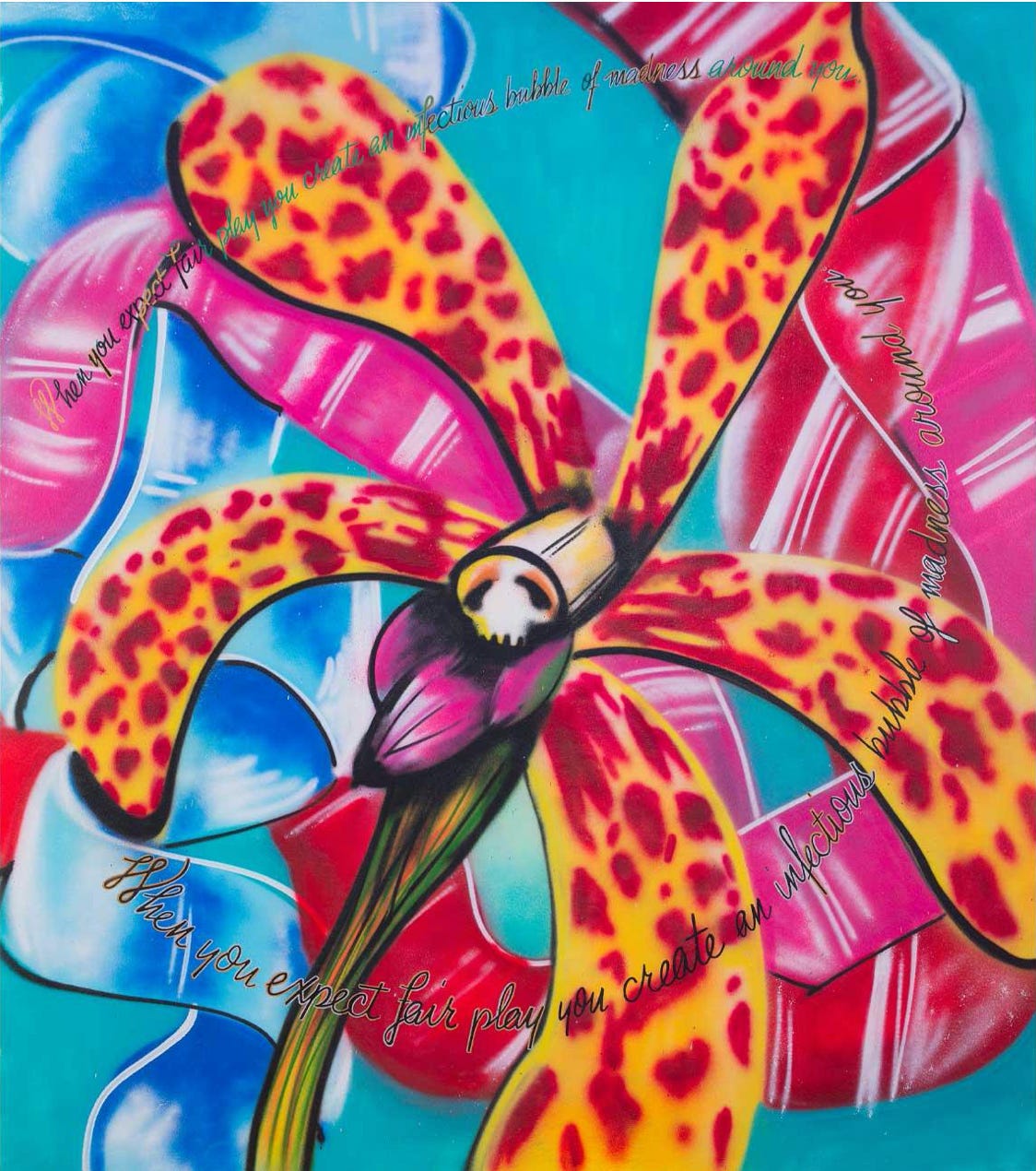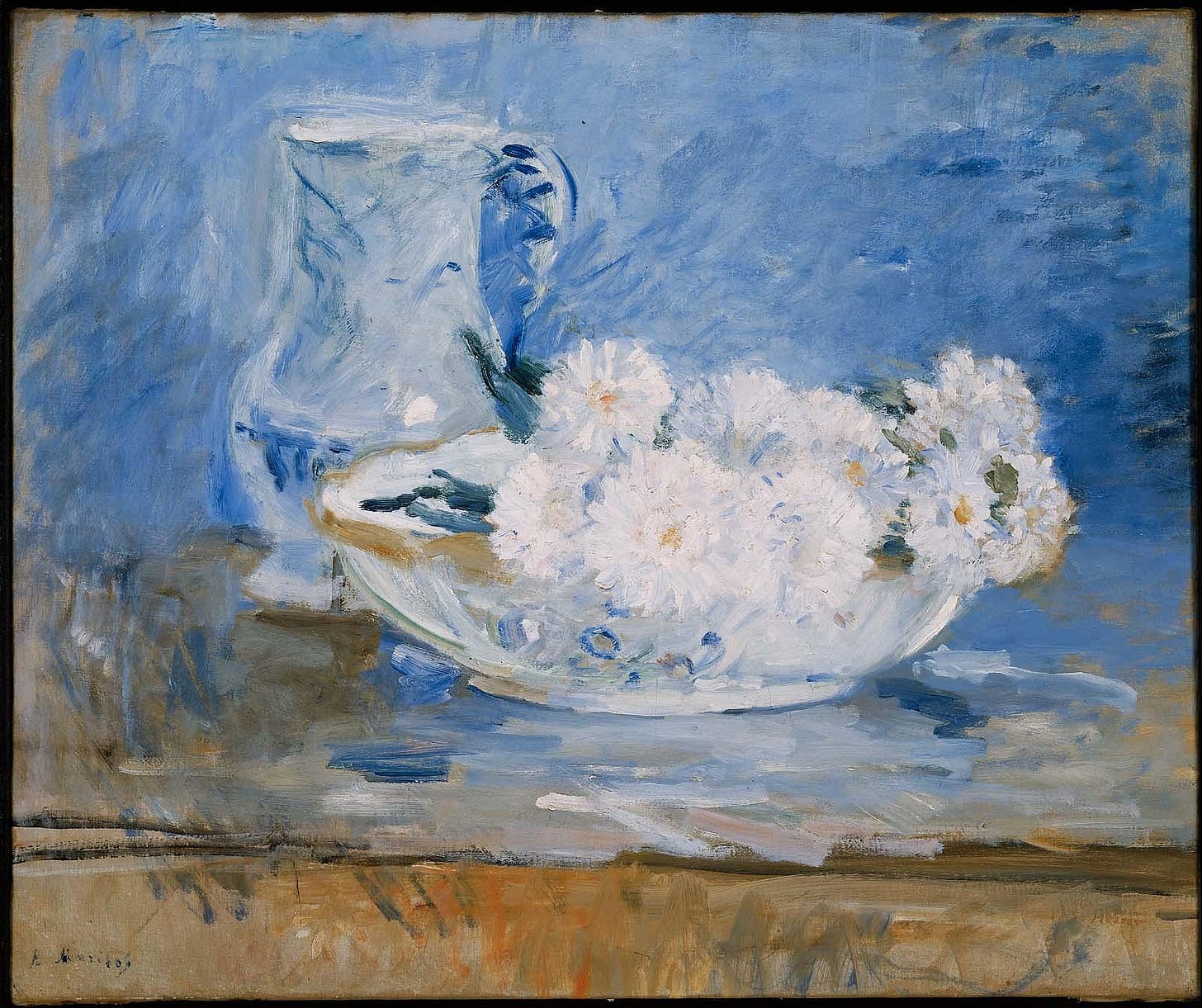This past week the Massachusetts Medievalist was able to return to Boston's Museum of Fine Arts - masked on a one-way track through the galleries, but there all the same. The main attraction was the Basquiat exhibit; the unexpected, lovely surprise was the one-room Cezanne exhibit; the after-glow take-away was thinking about flowers and women and art.
Lady Pink w/Jenny Holzer, "When You Expect Fair Play You Create An Infectious Bubble of Madness" (1983)
Basquiat and Cezanne were both men, and they are featured in stunning, important MFA exhibits right now. Both exhibits also include only one women, Lady Pink and Berthe Morisot; both of those artists are represented in those shows by flower paintings (Lady Pink has a number of items in the Basquiat show; Morisot just one painting in the Cezanne). I actually enjoyed Lady Pink's work more than Basquiat's -- I was appalled that I had never even heard of her before last week, and, after hunting around a bit online, even more appalled that the show wasn't focused on her and her lifetime of important work. Lady Pink is still very much alive and very much an active part of the contemporary art world.
Her monumental painting "When You Expect Fair Play You Create An Infectious Bubble of Madness" (1983), co-created with artist and calligrapher Jenny Holzer, places itself with confidence in a variety of creative conversations. Its inclusion in the Basquiat show emphasized it as part of the "post-graffiti" movement, with its spray-painted bold colors and stylized skull at the center of the flower. Its overtly sexualized presentation recalled some of Georgia O'Keeffe's work, claiming O'Keeffe as one of Lady Pink's foremothers and placing her as well in the traditions of American painting. And its floral subject recalls the hundreds of years of flower paintings by women, Morisot included, wherein flowers were considered suitable subjects for women. Understood as feminine and delicate, flowers were available to women painters, who were largely excluded from instruction in painting the human form.
Berthe Morisot, White Flowers in a Bowl, 1885
Lady Pink sees herself in these traditions but makes her own as well. Her collaborations with Holzer and other artists indict western art's celebrations of the implicitly male, solitary genius. Her flower in "When You Expect.." is not pretty or delicate but powerful and assertive. The colors are intentionally jarring and discordant -- Lady Pink's spray paint does not draw on the pastels and shading of her foremothers O'Keeffe or Morisot. Her use of text in this painting and in much of her work draws on that of her fellow graffiti artists but also on combinations of text and image used throughout human history, from relief sculptures of the ancient near east to Chinese scrolls and medieval European manuscripts.
Because so much of her work is collaborative, the traditional "solo show" would probably not be the best way to experience a Lady Pink exhibit. Maybe the "solo show" is a paradigm developed largely by and for white male western artists? (Morisot was featured in a commercially successful 2018/2019 solo show that toured internationally.) But I do want to see, in a real space and not on my computer screen, a collected retrospective of her work. That show should provide us a chronological presentation of her paintings and murals and train cars, her bold colors and multiple traditions, not simply "include" her as a tokenized sidebar in a show focused on a man.





